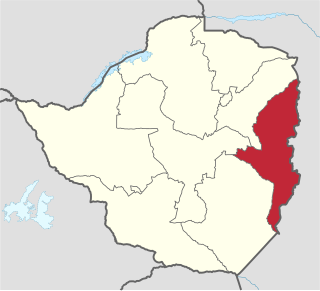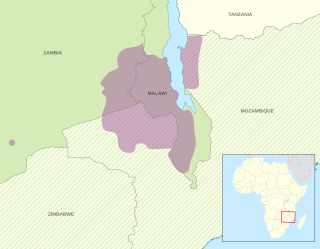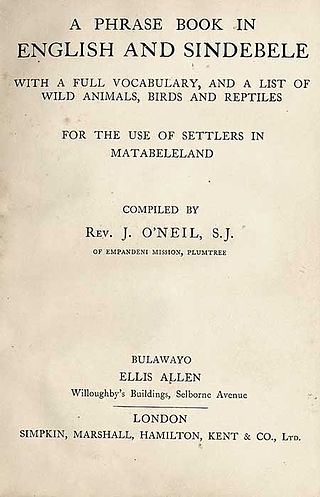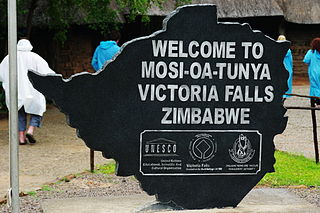Related Research Articles

The Bantu languages are a language family of about 600 languages that are spoken by the Bantu peoples of Central, Southern, Eastern and Southeast Africa. They form the largest branch of the Southern Bantoid languages.

Abkhaz, also known as Abkhazian, is a Northwest Caucasian language most closely related to Abaza. It is spoken mostly by the Abkhaz people. It is one of the official languages of Abkhazia, where around 100,000 people speak it. Furthermore, it is spoken by thousands of members of the Abkhazian diaspora in Turkey, Georgia's autonomous republic of Adjara, Syria, Jordan, and several Western countries. 27 October is the day of the Abkhazian language in Georgia.
Shona is a Bantu language of the Shona people of Zimbabwe. The term is variously used to collectively describe all the Central Shonic varieties or specifically Standard Shona, a variety codified in the mid-20th century. Using the broader term, the language is spoken by over 14,000,000 people.

Kirundi, also known as Rundi, is a Bantu language and the national language of Burundi. It is a dialect of Rwanda-Rundi dialect continuum that is also spoken in Rwanda and adjacent parts of Tanzania, the Democratic Republic of the Congo, Uganda, as well as in Kenya. Kirundi is mutually intelligible with Kinyarwanda, the national language of Rwanda, and the two form parts of the wider dialect continuum known as Rwanda-Rundi.

Tsonga or, natively, Xitsonga, as an endonym, is a Bantu language spoken by the Tsonga people of South Africa. It is mutually intelligible with Tswa and Ronga and the name "Tsonga" is often used as a cover term for all three, also sometimes referred to as Tswa-Ronga. The Xitsonga language has been standardised for both academic and home use. Tsonga is an official language of South Africa, and under the name "Shangani" it is recognised as an official language in the Constitution of Zimbabwe. All Tswa-Ronga languages are recognised in Mozambique. It is not official in Eswatini.

Manicaland is a province in eastern Zimbabwe. After Harare Province, it is the country's second-most populous province, with a population of 2.037 million, as of the 2022 census. After Harare and Bulawayo provinces, it is Zimbabwe's third-most densely populated province. Manicaland was one of five original provinces established in Southern Rhodesia in the early colonial period. The province endowed with country's major tourist attractions, the likes of Mutarazi Falls, Nyanga National Park and Zimbabwe's top three highest peaks. The province is divided into ten administrative subdivisions of seven rural districts and three towns/councils, including the provincial capital, Mutare. The name Manicaland is derived from one of the province's largest ethnic groups, the Manyika, who originate from the area north of the Manicaland province and as well as western Mozambique, who speak a distinct language called ChiManyika in Shona.

Chewa is a Bantu language spoken in Malawi and a recognised minority in Zambia and Mozambique. The noun class prefix chi- is used for languages, so the language is usually referred to as Chichewa and Chinyanja. In Malawi, the name was officially changed from Chinyanja to Chichewa in 1968 at the insistence of President Hastings Kamuzu Banda, and this is still the name most commonly used in Malawi today. In Zambia, the language is generally known as Nyanja or Cinyanja/Chinyanja '(language) of the lake'.
The Tumbuka language is a Bantu language which is spoken in Malawi, Zambia, and Tanzania. It is also known by the autonym Chitumbuka also spelled Citumbuka — the chi- prefix in front of Tumbuka means "in the manner of", and is understood in this case to mean "the language of the Tumbuka people". Tumbuka belongs to the same language group as Chewa.
The Manyika tribe is a Shona sub-group that originated from Manyika Dynasty. Manyika people speaks several dialects which include ChiManyika, ChiBocha, ChiUngwe, ChiHera, Chijindwi and the Urban dialect which is spoken in urban centers like Mutare and Rusape.

Northern Ndebele, also called Ndebele, isiNdebele saseNyakatho, Zimbabwean Ndebele or North Ndebele, associated with the term Matabele, is a Bantu language spoken by the Northern Ndebele people which belongs to the Nguni group of languages.
Ndau is a Bantu language spoken by 1,400,000 people in central Mozambique and southeastern Zimbabwe. The major varieties in Mozambique are called Shanga and Danda; that in Zimbabwe is simply called Ndau or Ndaundau.

The Shona people are a Bantu ethnic group native to Southern Africa, primarily living in Zimbabwe where they form the majority of the population, as well as Mozambique, South Africa, and a worldwide diaspora. There are five major Shona language/dialect clusters: Manyika, Karanga, Zezuru, Korekore, and Ndau.
Tonga (Chitonga), also known as Zambezi, is a Bantu language primarily spoken by the Tonga people (Batonga) who live mainly in the Southern province, Lusaka province, Central Province and Western province of Zambia, and in northern Zimbabwe, with a few in northwest Mozambique. The language is also spoken by the Iwe, Toka and Leya people among others, as well as many bilingual Zambians and Zimbabweans. In Zambia Tonga is taught in schools as first language in the whole of Southern Province, Lusaka and Central Provinces.

Zimunya, also referred to by the Jindwi people of Zimunya as "Jindwi", is a Paramount Chiefdom in Manicaland Province, Zimbabwe under Chief Zimunya.

Cham is a Malayo-Polynesian language of the Austronesian family, spoken by the Chams of Southeast Asia. It is spoken primarily in the territory of the former Kingdom of Champa, which spanned modern Southern Vietnam, as well as in Cambodia by a significant population which descends from refugees that fled during the decline and fall of Champa. The Western variety is spoken by 220,000 people in Cambodia and 25,000 people in Vietnam. As for the Eastern variety, there are about 73,000 speakers in Vietnam, for a total of approximately 491,448 speakers.

The Tati language is a Northwestern Iranian language spoken by the Tat people of Iran which is closely related to other languages such as Talysh, Mazandarani and Gilaki.
Yao is a Bantu language in Africa with approximately two million speakers in Malawi, and half a million each in Tanzania and Mozambique. There are also some speakers in Zambia. In Malawi, the main dialect is Mangochi, mostly spoken around Lake Malawi. In Mozambique, the main dialects are Makale and Massaninga. The language has also gone by several other names in English, including chiYao or ciYao, Achawa, Adsawa, Adsoa, Ajawa, Ayawa, Ayo, Ayao, Djao, Haiao, Hiao, Hyao, Jao, Veiao, and waJao.

Many languages are spoken, or historically have been spoken, in Zimbabwe. Since the adoption of its 2013 Constitution, Zimbabwe has 16 official languages, namely Chewa, Chibarwe, English, Kalanga, Koisan, Nambya, Ndau, Ndebele, Shangani, Shona, sign language, Sotho, Tonga, Tswana, Venda, Xhosa. The country's main languages are Shona, spoken by over 82% of the population, and Ndebele, spoken by roughly 15%. English is the country's lingua franca, used in government and business and as the main medium of instruction in schools. English is the first language of most white Zimbabweans, and is the second language of a majority of black Zimbabweans. Historically, a minority of white Zimbabweans spoke Afrikaans, Greek, Italian, Polish, and Portuguese, among other languages, while Gujarati and Hindi could be found amongst the country's Indian population. Deaf Zimbabweans commonly use one of several varieties of Zimbabwean Sign Language, with some using American Sign Language. Zimbabwean language data is based on estimates, as Zimbabwe has never conducted a census that enumerated people by language.
Malawi Lomwe, known as Elhomwe, is a dialect of the Lomwe language spoken in southeastern Malawi in parts such as Mulanje and Thyolo.

Ute is a dialect of the Colorado River Numic language, spoken by the Ute people. Speakers primarily live on three reservations: Uintah-Ouray in northeastern Utah, Southern Ute in southwestern Colorado, and Ute Mountain in southwestern Colorado and southeastern Utah. Ute is part of the Numic branch of the Uto-Aztecan language family. Other dialects in this dialect chain are Chemehuevi and Southern Paiute. As of 2010, there were 1,640 speakers combined of all three dialects Colorado River Numic. Ute's parent language, Colorado River Numic, is classified as a threatened language, although there are tribally-sponsored language revitalization programs for the dialect.
References
- ↑ Manyika at Ethnologue (26th ed., 2023)

Tewe at Ethnologue (26th ed., 2023)
- ↑ Jouni Filip Maho, 2009. New Updated Guthrie List Online